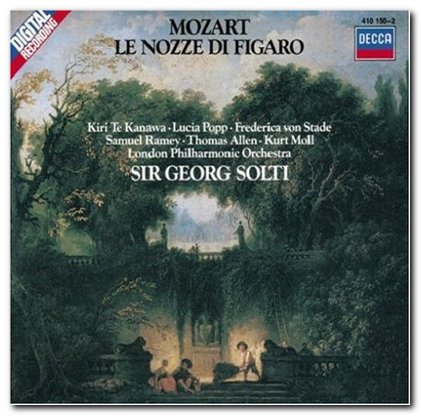 Here’s another series of posts about an interest of mine for two decades now. No, it’s not about photography (again :P), but about classical music.
Here’s another series of posts about an interest of mine for two decades now. No, it’s not about photography (again :P), but about classical music.
Just prior to our Bali trip I’d blogged about my discovering Classics Online. One thing about this site though is that while albums are still cheaper than their plastic media counterparts, they can still be somewhat pricey between USD6 to USD10 per album.
And collecting and listening to classical music isn’t quite like say modern pop. For instance, a single opera by Mozart like Le Nozze di Figaro spans three CDs—which means the album itself could be at at least USD20—and over the last 70 years where recorded classical music has been available, there has been several dozens of excellent recordings made by performing orchestras and conductors. Classical music listeners and collectors typically buy several of these recordings as each production can be at least subtly different from one to the next.
Say for instance, Le Nozze di Figaro is my favorite opera, and I’ve got four complete recordings of it already on CD: Sir Georg Solti‘s (picture here) legendary 1981 Decca recording with five of the finest soloists in recorded’s music history: Kiri Te Kanawa, Lucia Popp, Frederica von Stade, Samuel Ramey and Thomas Allen with the London Philharmonic Orchestra. Their efforts resulted in what’s arguably the best-ever recording of the much-loved opera. There’s also Claudio Abbado‘s 90s recording with the Wiener Philharmoniker, the late Karl Boehm‘s 1968 recording with the Orchester des Deutschen Oper Berlin and Hermann Prey sending the titular character his very unique baritone timbre, and Sir Colin Davis‘ 70s recording with the BBC Symphony Orchestra. And that’s not counting the two classical DVDs I’ve got of this opera. In other words, the investment in this one opera in other words already surpasses $500! That sure is a lot of money for a single piece of music.
The damnest thing is that despite my listening to Figaro or Handel’s Messiah for the last 24 years now—I started listening to the classics in 1985—I’m still constantly looking for other recordings! Yeah, it’s a weird thing. I mean, compared to Michael Jackson, how many times does Jacko re-record his music?
It’s sort of funny too. Say thinking of Messiah which I’ve got six CD recordings of. Because of the number of times I’ve heard For Unto Us a Child is Born, a chorus number from the first Act of Messiah, whenever I listen to any live performance of this piece I instantly start comparing notes of that listening to my benchmark CD recording, which is Sir Neville Marriner‘s 1970s Decca recording with the Academy of St. Martin-in-the-Fields. That piece isn’t an easy piece to sing if the performers take a brisk tempo, so my mind screams “sheer butchery” when I hear live performances and think about Marriner’s recording.

One thing my mum was right though is that all the classical music CDs take up space. And despite what initial pundits of optical media would have you believe, those pieces of plastic do not last for decades. Just take a look at the picture here of one of my CDs in a set of three of Cosi fan tutte. That’s why since 6 years ago I started converting all of my CDs to MP3 format. OK there’re better, non-lossy compression formats available now, but that was the codec of choice in 2002. That brings me to my next post in this series; bringing my classical music collection around.:)
Recent comments